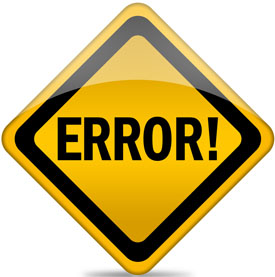ABA Bank Compliance Officers Survey Part 3: Compliance earning its keep
Testing the “Compliance as cost-prevention center” concept
- |
- Written by Steve Cocheo

The compliance fraternity’s riposte has long been that the discipline was not a cost center, but a cost-prevention center.
|
ABA Bank Compliance Officers Survey Part 1 |
|
| ABA Bank Compliance Officers Survey Part 2 Compliance accountability, and how well it’s spelled out and enforced  |
The logic of the point certainly can be seen.
“You spend a heck of a lot more money remediating errors than getting it right in the first place,” says John Soffronoff, president at ICS Risk Advisors, and a former federal regulator.
The question is, how well do compliance officers themselves feel the concept matches the performance? The 2011 ABA Bank Compliance Officers Survey probed this, looking at both money costs and reputational costs.
ABA asked compliance officers if they could specifically point to some way in which Compliance had helped the bank save money by avoiding an action or a product that would have become a costly problem.
Across the entire sample, 41.5% said yes. Usually, the larger the bank, the more likely the institution responded affirmatively: Below $100 million, 31.9%; $100 million to $499 million, 35.8%; $500 million to $999 million, 48.5%; $1 billion to $19.99 billion, 56.8%; and $20 billion and over, 60%.
Digging deeper, the survey probed what areas of compliance had been involved--where money had been saved--among those answering “yes.” Compliance officers could give multiple answers:
• Lending, for reasons other than equal credit opportunity: 67.3%
• Bank Secrecy Act and anti-money-laundering and sanctions laws: 57.8%
• Deposit product regulations: 37.3%
• Equal credit opportunity or fair housing laws and regulations: 20.8%
• Nondeposit products, such as insurance or securities: 6.6%
In the association’s 2009 survey, the previous edition, BSA and related laws came in first by a wide margin, with “Lending, for reasons other than equal credit opportunity,” coming second, reflecting shifting compliance priorities.
Opinions varied, among compliance experts asked about the significance of the numbers. Several commented on the fact that, overall, less than half of the compliance officers could point to savings.
Tim Burniston, vice-president and senior director, risk and compliance consulting practice at Wolters Kluwer Financial Services, suggested that in some cases Compliance has been helping the bank avoid fines and other costs of compliance errors for so long that those officers somewhat take themselves for granted. He suggested that they might be thinking, “I don’t have to point out something specific here, I’ve been keeping the bank out of trouble all these years.”
Mitch Lucas, vice-president, product management and legal compliance, at Harland Financial Solutions, a former bank inside counsel, advised compliance officers to be more proactive in pointing out their aid to their institution.
“If compliance people don’t collect and monitor that kind of data, they will be seen as a cost center,” says Lucas. “They have to be their own cheerleaders.”
Being short on resources may be the issue, suggested Linnea Solem, director of data privacy and business risk management at Deluxe Corp. Compliance officers who are scrambling simply to keep up with their jobs don’t have the luxury of spending time and resources tracking and proving their worth.
It’s doubtful that Shakespeare envisioned bank compliance, and he didn’t treat money lenders very well in The Merchant of Venice. But he well understood reputation risk. As Iago, an evil character from Othello, stated:
“Who steals my purse steals trash; 'tis something, nothing;
'Twas mine, 'tis his, and has been slave to thousands;
But he that filches from me my good name
Robs me of that which not enriches him,
And makes me poor indeed.”
While monetary loss to a bank can’t be so easily dismissed as losing a purse, a bank’s good name is priceless. The survey dug into this type of loss, and loss prevention.
To the good, the survey found that among the sample, which included banks of all sizes, those suffering reputational damage in the last three years was small--only 8% of the total sample reported this. (Specifically, compliance officers were asked if they had received “adverse press or suffered other public reputation injury in connection with a compliance-related matter.”)
But that wasn’t the whole picture. Wide variance was seen among bank size categories: Reporting some injury among banks under $100 million, 4.3%; $100 million to $499 million, 5.1%; $500 million to $999 million, 10.7%; $1 billion to $19.99 billion, 12.4%; and $20 billion or more, 36%.
“Most negative publicity related to compliance matters has been directed at large banks—loan servicing, fair lending, etc.,” says John Soffronoff of ICS Risk Advisors.
Soffronoff isn’t surprised at the numbers. He adds, however, that “the press is becoming more aware of compliance issues and the availability of information from regulatory websites. So now the local press is carrying information on all matters of regulatory enforcement, including compliance.”
Where banks have been burned, the tendency has been to add resources to the compliance area affected, respondents reported. Many, though not all, banks reporting reputational damage said resources had been bolstered--71% sample-wide.
However, this again varied by bank size, with 54.5% of banks between $500 million and $999 million receiving more aid, versus the high of 100% of banks of $20 billion or more getting help.
Regarding preventative efforts, the survey asked the compliance officers if they could point to a specific instance where Compliance enabled their institution “to avoid an action or product that would have given the bank a bad public image.”
Over the entire survey base, a bit more than one in four banks--27.4%--responded affirmatively. The larger the bank, the more likely the reported success: banks under $100 million, 18.7%; $100 million to $499 million, 19.6%; $500 million to $999 million, 36.9%; $1 billion to $19.99 billion, 43.1%; and $20 billion or more, 60%.
Those bankers who answered “yes” were asked what areas of compliance caused reputation damage. The top three, sample-wide, were: lending regulations (other than equal credit opportunity), 60.9%; deposit product regulations, 44.2%; and BSA and anti-money-laundering and sanctions rules, 40%.
In some cases, reputational damage and monetary damage both followed errors. Of those institutions reporting reputational issues, 21% said that consumer reimbursement had been necessary. This was typically more frequent the larger the banks were, with 33% of those $20 billion or more having to reimburse customers.
Upcoming survey and commentary segments:
• What are the trends in bank compliance compensation?
• Where banks are outsourcing compliance—and where are they taking it back inside?
• How is compliance function structure evolving?
• How secure do compliance officers feel in their jobs?
The ABA Bank Compliance Officers Survey is a project of the ABA Center for Regulatory Compliance. Members of ABA can download the entire survey report here.
Tagged under Compliance, Risk Management,














